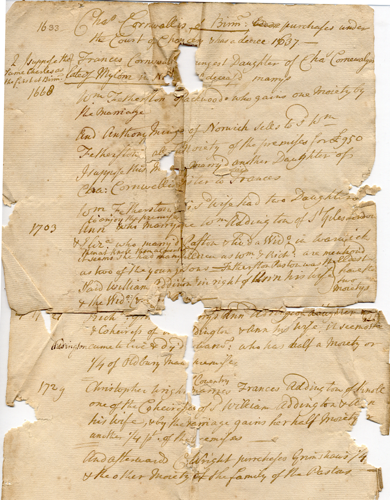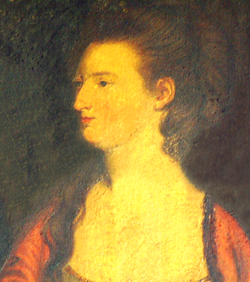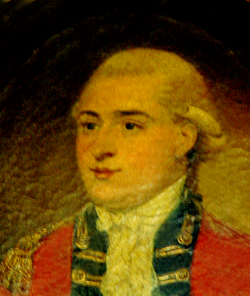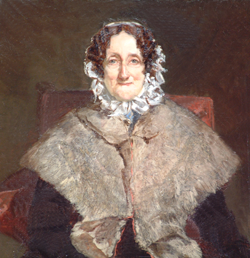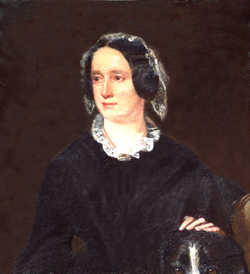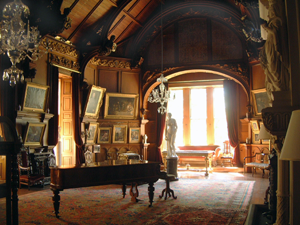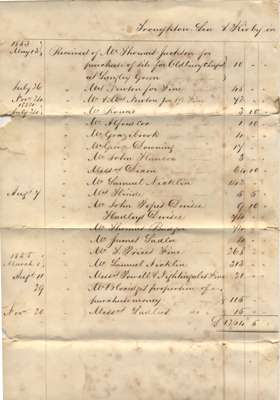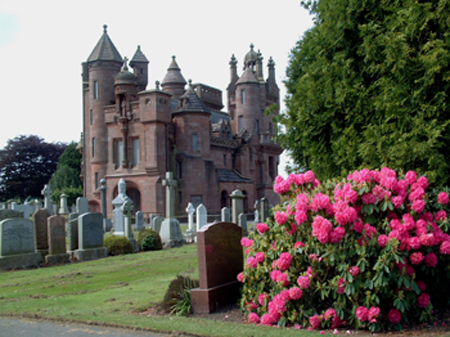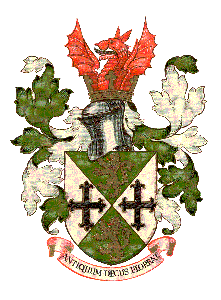
|
History
of Oldbury, Langley and Warley
|
||
|
Communities
of the West Midlands
|
||
|
The
website of Langley Local History Society - Oldbury Local History
Group - Old Warley Local History Society
|
||
 |
||
| HOME | |
| NEWS & EVENTS | |
| HISTORY SOCIETIES | |
| PUBLICATIONS | |
| GALLERY | |
| QUESTIONS | |
|
article 001 THE HISTORY OF OLDBURY MANOR |
|
Oldbury under the Dudley family After the destruction of Hales Owen Abbey in 1538, Henry VII gave the Manor of Hales Owen, which included Oldbury, Langley and Warley, to Sir John Dudley the next year. Sir John was a leading member of the court, and this made the manor subject to affairs of state in a way not seen since the 12th century.
Sir John had already sold much of his lands in the south of England, to concentrate on his midland estates, particularly that of John Sutton, 3rd Lord Dudley at Dudley Castle. Under Henry VIII, he rose to become Lord Admiral, a Knight of the Garter and a Privy Councillor, and, therefore, one of the most influential men in the land. He continued to be powerful during the reign of Henry's son, the young, sickly Edward VI, and in 1551 granted himself the title Duke of Northumberland. Just before is death in 1553, Edward VI changed the succession to the throne to exclude his half sisters, Mary and Elizabeth, whom he detested, in favour of Lady Jane Grey, third in line to the crown. One of Northumberland's younger sons, Guilford Dudley, was married to Lady Jane, and so Northumberland supported the change, and may well have instigated or encouraged it. Jane was proclaimed Queen on 10th July 1553, but Mary entered London nine days later to popular support, and claimed the throne. Lady Jane Grey, Sir John Dudley, and Guilford Dudley were arrested and executed later that year. The rest of John's sons were arrested and imprisoned in the tower, but later pardoned and released. Hales Owen Manor was confiscated by the crown with the rest of John Dudley's lands, but after a successful petition by his widow, Jane, the manor was returned to her. One of the sons released from the Tower in October 1554 and pardoned in 1555 was Robert Dudley, his fifth son. He had been a friend and confidant, and possibly a lover, of Princess Elizabeth. When she came to the throne in 1558, his fortunes improved and he was given, amongst other favours, Kenilworth Castle and the title Earl of Leicester.
The establishment of Oldbury Manor Jane Dudley died in 1555, not long after Hales Owen Manor was returned to her, and Hales Owen passed from her to Robert Dudley. In 1557, Robert Dudley sold all of Hales Owen Manor, apart from Oldbury, Langley and 'Walloxhall', to Thomas Blount and George Tuckey for £3000. Robert Dudley settled Oldbury, Langley and 'Walloxhall' on himself and his wife Amy, with reversion to her right heirs. Thus, these lands were separated from Hale Owen Manor, and marked the establishment of Oldbury Manor as a separate entity. Blount and Tuckey also acquired Warley Wigorn, and in 1560 sold them all on to Sir John Lyttleton. Both Warley Salop and Warley Wigorn became part of the Lyttleton estate.
Robert Dudley had married Amy Robsart, the daughter and heiress of the Norfolk land owner Sir John Robsart, in June 1550, when they were both in their late teens. It was a lavish wedding at Sheen attended by the King himself, the young Edward VI. However, the marriage proved childless, and Robert's political activities and increasing involvement at Queen Elizabeth's court after 1558, meant that they were leading separate lives by 1560. Amy became unhappy,and is believed to have been suffering from a painful chest ailment, and depressed by rumours of her husband's affair with the Queen. In September she was living at Cumnor Manor in Berkshire, owned by friends of her husband. 'Our Lady's Fair' was held on Sunday 8th September at nearby Abingdon, and she insisted that all the servants should go to the fair, leaving her alone in the house. When they returned, they found Amy lying at the foot of a staircase with a broken neck. A verdict of 'mischance' was recorded, but it has never been conclusively established whether her death was really an accident, a murder or a suicide. By these events, Oldbury manor passed in 1560 from the Dudley family to Amy's heir, Arthur Robsart, a son of Sir John Robsart but of doubtful legitimacy. A little later, Arthur Robsart had to take out a Chancery suit against Sir John Lyttleton and George Tuckey to protect his title to the Oldbury lands, and he increased his local land holding by buying further lands at West Bromwich from Sir William Skeffington in 1597. In 1573 Arthur Robsart had manorial rights, and apparently settled the manor on his son Robert [1]. However, a document of 1607 [2] describes Robert Robsart as the 'son of the Lord of the manor': " William Tuncky, a customary tenant, while sinking a draft well of great depth was desired by one Robert Robserte, son of the Lord of the manor, to sink the well deeper to see if there were any coals to be found. Other tenants at the same place had dug and found coals". Robert predeceased his father, however, and Oldbury manor passed to his son George Robsart. In 1610 George decided to profit from his inheritance and sold the reversion of the manor to William Turton. He then thought better of the deal, and managed to buy back most of the manor, although William Turton retained some of the buildings. The manor was again owned by the Robsart family, in the shape of George, his wife Anne and his son Arthur. The Lyttleton papers include a 1630 lease [3] from Sir Thomas Lyttleton of Frankley to Edward Banburye of Blakeley Hall of tithe corn from Oldbury and Langley Walloxhall. This is unlikely to be corn grown on Blakeley Hall itself since the Lyttletons would have no interest in it. However, it may refer to a holding by Lyttleton in the Langley area, part of which was in Warley Wigorn, and therefore sold to him by Blount and Tuckey. Edward Banburye was probably a tenant of the Robsarts. The Robsarts did not keep the manor long and sold it on again. The exact circumstances of the sale are not clear, but 'The Victoria County History for Worcestershire' states that Arthur Robsart and William Turton, son of the previous purchaser, sold the manor to Charles Cornwallis in 1633, citing a 'Feet of Fines' of that date [4]. Charles Cornwallis came from Broom Hall in Suffolk, but he already had land interests in the area. In 1604, Sir Charles Cornwallis, his grandfather, had bought the manor of Harborne and Smethwick from Lord Dudley. This was also part of the Halesowen Abbey lands at the dissolution [5]. After a long and illustrious diplomatic career, Sir Charles made some injudicious remarks about the Scots, and was imprisoned in the Tower. On his release he came to live at Harborne, and he died there in 1629. Harborne and Smethwick Manor descended to his grandson Charles, but he sold it to Thomas Foley in 1661.
Resident Lords of the Manor Blakeley Hall had been a grange of Halesowen Abbey, and probably being the largest house in Oldbury, had become the manor house. Charles Cornwallis was married to Elizabeth, a member of the Colmore family of Birmingham, and they are reported to have had their children christened at Oldbury Chapel [6]. This suggests that they were living at Blakeley Hall. The will of Elizabeth's father, Edward Colmore [7] seems confirms this in these extracts: "In the name of God Amen the fourteenth daie of July in the yere of our Lord God one thousand six hundred and fortie of Edward Colmore of Blakely Hall in Oldbury in the Countie of Salop gent And as concerning my lands tenements and worldly goods first my will and bequest is, And I give unto Oldbury in the Countie of Salopp where I now dwell one croft of land with the appurtenances being in Arly in the countie of [Warwick] for . the mainteynance of a minister there for ever. "Item - I give unto Katherine Cornwalleys my granchilde and Goddaughter that Lease of myne that I have duringe the life of Mr [or Mrs] Robsart issuing out of the manor of Oldbury beinge fifteene pounds per Annum. "Item - I give to the poore of Oldbury five pounds in money" Clearly, in 1640 Edward Colmore was living there with Charles and Elizabeth. It would appear that members of the Robsart family were still living in Oldbury manor, apparently now tenants at £15 per annum rent. Edward Colmore left generous amounts for his servants, including twenty shillings to a Katherine Dudley. The bulk of his estate went to Charles Cornwallis, his "loving sonne in lawe", with forty shillings for his daughter Elizabeth Cornwallis "to buy a ringe". According to Nash, Charles Cornwallis held a court leet and court baron at Blakeley Hall on 29 April 1648. As well as selling off Smethwick Manor, he also sold off some properties in Oldbury manor in 1661, at a time when he was getting on in years and putting his affairs into order. Charles and Elizabeth had no sons, but two daughters, Anne and Frances, starting a succession of descent for the manor down the female line. Around 1663 he conveyed to Anne and Francis, as coheirs, the manor of Oldbury, his lands there and the tythe of corn. Anne was already married to Anthony Mingey of Norwich and immediately her half of the estate was settled on him. In 1668 Frances married William Fetherston of Coventry, whose father John Fetherston had started to develop Packwood House in Warwickshire. Around 1668 William Fetherston purchased Anthony Mingey's moiety for £950 [8], and, thus, the whole manor passed to the Fetherston family. They and their successors did not live permanently at Blakeley Hall, and may have rented it out or used it as an occasional residence. The days of resident Lords of the Manors had ended!
A Latin court roll from 1668, carrying the manor seal survives [9], recording the transfer of copyhold of six sellions of land in 'Pynfold Crofte' from Thomas and Ellinor Darby to Elizabeth Parrish, widow, and her heirs, "virgam consuedo manorij" [by the rod according to the custom of the manor]. Possession of the copyhold document and a small wooden rod relating to the property was taken as proof of copyhold. When land was transferred, the 'rod' was surrendered by the old tenant to the court, and passed to the new. The Lords of the Manor received a payment for the transfer. The Court Baron was held on 8th August in the name of Anthony Mingey and his wife Anne and Frances Cornewallis, so it predates the marriage of Frances and the transfer of full ownership to William Fetherston. The Lord and Lady of the manor would rarely, if ever, attend the court, leaving the business to their steward, John Harrison, who signed the document, Isaac Hypkiss their bailiff, and Thomas Jorden. The 1662 hearth tax returns include a 'Thomas Darby', paying for three hearths, and an 'Isaac Hypkiss' paying for one. A 'Thomas Jordan, nayler' contributed 1/6 to the voluntary lay subsidy of 1661, and may have been a witness to the proceedings at the court. The bailiff of the manor probably lived in Oldbury, at a house in the centre of the town on a site opposite that of the later 'The Big House'. This was known as 'The Old Manor House' [10] and was surrounded by pleasure grounds and orchards. It survived until 1904, by which time it was being used as a common lodging-house and in a very dilapidated state. The full name of the manor given on the 1668 document is 'Oldbury Walloxall al Langley Walloxall al Langley e Walloxall', which translates as 'Oldbury Walloxall otherwise Langley Walloxall otherwise Langley and Walloxall', as found on later rolls in English [11]. This perpetuates the mystery surrounding the location of the medieval settlement of Walloxhall, but adds nothing to solving it!
Female descent of the manor William Fetherston was a generous man and his nephew Thomas erected a monument at Studley, Warwickshire, to commemorate his gift of money for twelve loaves of bread for the poor of Studley each Sunday. The Fetherston family developed another connection to the Oldbury area when William's sister Mary married John Grove of Rowley in 1666. However, Charles Cornwallis's failure to provide a male heir was continued in subsequent generations, with the lordship of the manor passing through daughters and different family names. Frances and William Fetherston left two daughters, Elizabeth and Anne, as co-heiresses, both christened at Holy Trinity, Coventry, the city where they were living. According to Burke, their only son, William, had died in 1704, and a third daughter, Frances, did not inherit and, presumably, had also died early. Elizabeth was born in 1675, married into the Paston family, and had no children. After her death, her portion of the estate reverted to her sister's heirs. Anne married William Addington of Lincoln's Inn Fields, Middlesex, and had the two daughters, Frances and Anne. On 7th April 1713, four years before his death, William Fetherston of Warwick Borough, transferred the Manor and Lordship [12] " with all the rents, services, Courts Leet, Courts Baron, view of Frankpledge, wasts, waste grounds, goods of felons, fugitives and outlawes, tithes and tenths of corne, grain and hay " to William Addington. There were still enough manorial rights at this time for the manor to produce a good profit for its Lords and Ladies! The main inheritance was 'Blackley Hall' with its barn, stable buildings, garden, orchard, appurtenances, and a string of fields: Barne Croft, Moore Rough, Blackley, Grove Close, the Pool Tayle Close, Hill Leasow, Lower Blackley and Great Meadow. Many of the fields can be identified on the Tithe Map 130 years later. With it went the ' water Corne Mills, commonly called Oldbury Mills, and the Mill Pool ' and two closes near the mill. There was also about an acre in a place called 'Kingsfield' near 'a coppice called Kimberley', and some cottages near 'the Park' and elsewhere in the manor. Frances Addington married a Coventry gentleman, Christopher Wright, and Anne married Richard Grimshaw of Knowle. The Lordship was shared with Elizabeth Paston until her death, and then held jointly by the Wrights and the Grimshaws. Richard and Mary Grimshaw had one son, also Richard, who died unwed, and who sold his moiety to Christopher Wright around 1765, reuniting the manor again under one Lordship.
Christopher Wright and Frances Addington also had one son, called Christopher after his father. The 'Victoria County History of Worcestershire' is incorrect at this point, making no reference to Christopher Wright the younger, and attributing to the father a marriage that was entered into by the son: the error is perpetuated in Hackwood [13]. The will of 'Christopher Wright of the City of Coventry Gentleman', written in 1763 and proved in 1765, refers to 'my loving wife ffrances Wright and my son Christopher Wright'. The will of 'Christopher Wright of Hawkesbury Esquire', written in 1778 and proved in 1798, refers to provision for his mother Frances Wright widow and for his 'dear wife'. On 2nd September 1776, Christopher Wright, the son, had married Mary Parrott, the widow of Richard Parrott of Hawkesbury Hall at Foleshill Church near Coventry. The Parrotts were a family of well-to-do mine owners working collieries at Hawkebury in the Bedworth area. Richard and Mary had no children, but Richard had a brother, Francis, who was a 'Doctor of Physic' practicing in Bull Street, Birmingham, and it was through his family that the manor was to descend.
Christopher Wright Jnr was a lawyer and eager to get to grips with his inheritance. In one document he set out the descent of the manor from Charles Cornwallis to himself [14]. In another, he sets out the customs of the manor [15]. The items refer to the succession of the manor, which was clearly a matter of some concern at the time since there was no heir to the estate, and concludes the 'Entails seem not to be warranted by custom'. The document is not signed or dated:
During the Lordship of Christopher and Frances Wright, the first canal between Birmingham and the coalmines of the Black Country was cut. It was a contour canal built by James Brindley, and its line took it through the grounds of Blakeley Hall Farm, within 150 yards of the old hall itself. Canal records [16] suggest that an agreement on the line of the canal was reached on 31 August 1772 with 'Frances Wright and another' (presumably Christopher Wright) but this is only twenty-one days before the canal opened, and does seem to be leaving it late. The old house of Blakeley Hall was demolished soon afterwards, and a new farmhouse, Blakeley Hall Farm, erected close to a toll gate on the turnpike road bordering the estate.
The Manor under the Parrotts and the Frasers Mary Wright appears on manor documents as the sole Lady of the Manor in the 1780s and 90s. There was no heir to the estate from the old Cornwallis line. On her death in 1801, she willed most of her estate, including Oldbury Manor, to one of her first husband's relatives, Francis Parrott, junior, born in 1764. Francis Parrott was Mary's nephew, the son of her brother-in-law Francis Parrott MD, who had died in 1790. This is made clear in a document [17] dated 9th January 1816, by which Francis Parrott of Hawkesbury Hall sold a charity school established by Richard Parrott and bequeathed in trust by Mary Wright, 'widow and wife of Christopher Wright and previously wife of Richard Parrott, uncle of Francis Parrott'. Francis Parrott seems to have lived on his inheritance, and was Lord of the Manor from 1801 until his death in 1843. In 1816 he agreed to sell some of the manor land in the centre of Oldbury next to the bailiff's house, the 'Old Manor House', for the building of a Court of Requests. When the Oldbury Enclosure Act was passed in 1829, half of the proceeds of the enclosure went to him as Lord of the Manor, and the remainder was divided between the people of Oldbury and a fund to build a new Anglican Church in Oldbury. Francis Parrott died in 1843 at Foleshill without any children, and the estate passed to his elder sister Elizabeth.
Sixty years earlier, in 1783 Elizabeth Parrott had married Major John Fraser of the 2nd Battalion of Foot, the Royals, at St Martin's Church in Birmingham. They lived at his ancestral home, Hospitalfield House, Arbroath, on the east coast of Scotland. They had one child, Elizabeth, born in 1805, and her father died when Elizabeth was less than two years old. Shortly afterwards, Mrs Fraser fled Hospitalfield House, leaving it to be administered by her husband's trustees, and returned to Hawkesbury Hall. During her return to Coventry with the young Elizabeth, she was hotly pursued by the law since it was illegal in Scotland for them to leave Hospitalfield without the trustees' permission. Thus, Elizabeth Fraser (née Parrott) was 82 when she inherited the Hawkesbury estate, including Oldbury Manor, and she held the Ladyship of the Manor for only eight years. 'Mrs Frazier' is recorded on the Oldbury Tithe Apportionment of 1843 as the owner of the estate around Blakeley Hall Farm, leased out to three separate tenants, George Downing, Phoebe Downing and William Downing. She also owned three other small pieces of land: a strip in the old Radnall Field; land next to the court house which was part of the lands surrounding the old bailiff's house; and a house at Langley in Hobicus Lane. The manor still held the copyhold of many parcels of land, the chief rents on some freehold land and mineral rights in Oldbury, all of which increased its value. The young Elizabeth Fraser was brought up at Hawkesbury Hall. She married Arthur Baker, a young soldier in the 3rd Dragoon Guards, at Aberdeen when she was only eighteen, and they travelled to Arbroath to claim Elizabeth's inheritance. The trustees were unimpressed by the claim, and refused to transfer Hospitalfield House, left in trust to Elizabeth, to them. Instead, they 'bought off' Arthur Baker with a sum of money for a commission in the army. However, he disappeared soon afterwards with the money, leaving Elizabeth behind, and was found dead in strange circumstances at Dover four years later. The young widow Elizabeth and her mother spent time at Arbroath and at Coventry. She was an intelligent young woman, and among her accomplishments was playing the harp. Enter Patrick Allan, born in 1813, the son of an Arbroath weaving merchant [18] . He had become an artist, studying in Edinburgh and abroad before settling in London. He returned to Arbroath to complete a series of paintings for an edition of Sir Walter Scott's book 'The Antiquary', and there he met the widowed Elizabeth Fraser-Baker, eight years his senior. They fell in love, and were married in 1843, when Elizabeth was thirty-eight.
The last Lords and Ladies of the Manor
When her mother died on 2nd February 1851, Elizabeth inherited Hawkesbury Hall and Oldbury Manor from her to add to the Scottish estates inherited from the Frasers. Patrick and Elizabeth Allan became Lord and Lady of Oldbury Manor. That year they changed their name to 'Allan-Fraser', and it is under this name that they are recorded on most manor documents. Patrick largely gave up his painting career, and took to running the estates he had acquired through Elizabeth. They extended and developed Hospitalfield House, which was their main residence, and it wqas Patrick that designed the ideosyncratic features of the building.
Patrick was intent on maximising the income from all of their estates to pay for the work at Hospitalfield. In Oldbury, he chased up back rents, exercised rights over copyholders, leased the minerals under the Blakeley Hall estate and pursued court cases against defaulters. Patrick was not a man to give ground in negotiations or when he felt his interests were being compromised, and we must assume he had foreseen the financial potential of his marriage to Elizabeth. Thomas Ball Troughton was the steward of Oldbury Manor in the early part of the Allan-Fraser's lordship [19], but Edward Caddick, a West Bromwich solicitor, was appointed steward in 1870 [20]. He was at the heart of the legal activities in Oldbury and moaned to Patrick Allan-Fraser about the inefficiency of previous stewards. Caddick was involved in a very significant court case for Patrick Allan-Fraser, heard in the Royal Courts of Justice in 1889. This concerned land in the centre of Oldbury which had been sold by the owner to Worcestershire County Council who had built a police station there. It had been sold as freehold, but Patrick Allan-Fraser claimed that it had not been enfranchised and was still copyhold with rents payable to him. Proving their case was not easy, and Edward Caddick bitterly complained about the poor record-keeping of previous stewards who did not adequately describe the location, status and tenancy of the estate lands. After a lengthy fight, the judgement went to the Allan-Fraser, and Worcestershire County Council reluctantly paid up to enfranchise the land.
Enfranchisement was a good source of income. 'Copyhold land' was held from the Lord of the Manor by virtue of the tenant appearing at the Manor Court and paying an entry fee to be admitted to the property. This was recorded in the Manor Rolls and he was given a copy indenture (hence the term 'copyhold'). He then paid an annual rent to the Lord of the Manor. Enfranchisement was the process by which the copyhold was converted to a freehold by the payment of a single fee. There might still be an ongoing rent even on the freehold land, known as the 'Chief Rent', depending on the terms of the enfranchisement. The note on manor customs from Christopher Wright suggests it was the practice at that time to charge seven years rent and to reserve the chief rent on enfranchisement. Towards the end of the nineteenth century, there was a growing tendency to convert copyhold land to freehold since an Act of 1852 granted copyholders the right to demand enfranchisement, and the copyhold system was finally abolished by an Act of Parliament in 1922. On 3rd October 1872, for example, the Allan-Frasers agreed to the enfranchisement of two plots of land owned by G Harris at Bristnall Fields for £52-18-9, including buildings, mines and chief rents. Patrick and Elizabeth had no children, and were the last Lord and Lady of Oldbury Manor. Elizabeth died in 1873 aged 68, and Patrick designed and built a large mausoleum for her and her parents, and later himself, as the centre-point of the new Western Cemetery at Arbroath. This is a large red sandstone building incorporating the style of detailed decoration developed by Patrick for Hospitalfield House itself.
Since he had no heir, Patrick established a Trust to administer the estates and run Hospitalfield House as an arts centre to encourage young artists. After his death in 1890, 'The Patrick Allan-Fraser of Hospitalfield Trust' was enacted, and they still run it as an arts centre today . Edward Caddick, Robert Whyte and James Muir were the first trustees who ran the estates of Patrick Allan-Fraser, including Oldbury Manor. The trustees sold the right to hold a market at Oldbury to Oldbury Urban District Council in 1895 [21] , and a market was established in the town square. The influence of the manor and nature of land holding was changing at the turn of the twentieth century. Tenants increasingly sought to enfranchise their lands: in July 1898, for example, John and Edward Harper won an enquiry at the Talbot Hotel, Oldbury, held by the Copyhold Department of the Board of Agriculture to enfranchise their lands at Rood End [22]. The number of manor courts being held decreased rapidly, one of the last being in 1923, with only two small items of business, when Edward Caddick, of the solicitors Caddick and Yates, acted for the stewards of the manor. The Kelly Directory of 1936 records the Trust as the Lord(s) of Oldbury Manor, and they still have that position, although now it carries no power or influence.
References
Acknowlegement The author is greatly indebted to Dr William Payne, the Director of the Patrick Allan-Fraser of Hospitalfield House Trust at Arbroath, for allowing free access to their archives which provided valuable information on the Wright, Parrott, Fraser and Allan-Fraser families This article © Dr Terry Daniels 2008 - contact for permission to reproduce |
|||||||||||||||||||||||||||||||||||||||||||||||||||||||||||||||||||||||||||||||||||||||||||||||||||||||||||||||||||||||||||

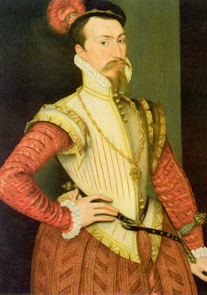
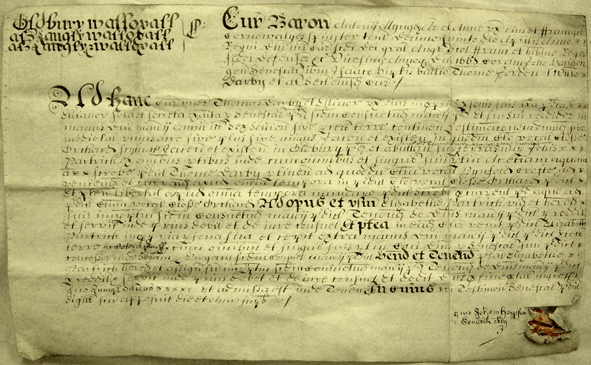
%20reduced.png)
